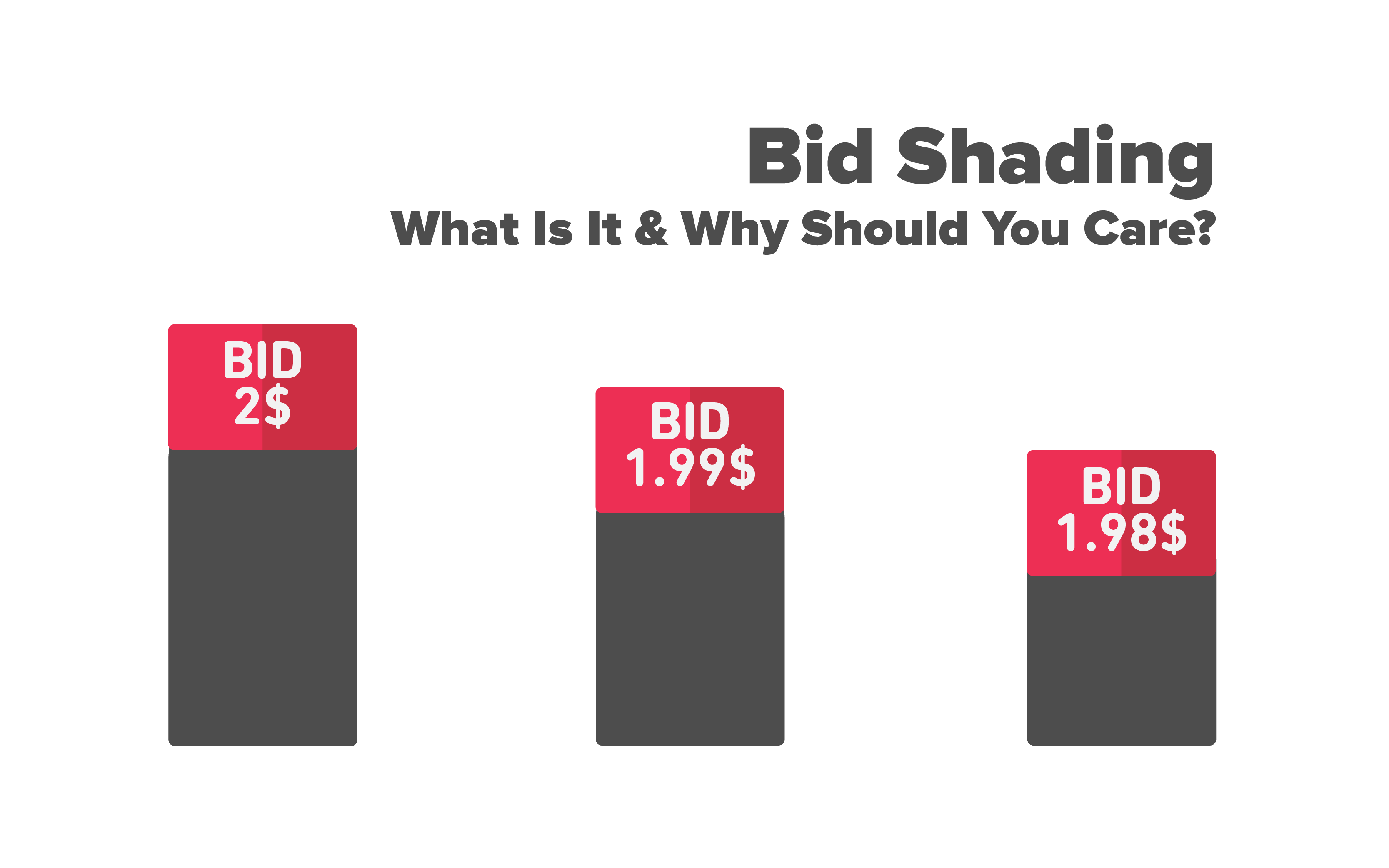Adapting to the New Cookieless reality: An Expert Update for Publishers
Welcome to a new piece in Yieldbird’s series, drawing from our own research into the significant shifts in the programmatic…

Bid shading is an algorithm responsible for automated bid strategy. It creates an opportunity for buyers to avoid paying too much for ad impressions.
Google recently announced its switch from a second-price to a first-price auction model. This change is supposed to concern only the space sold by the Ad Manager. At the moment, there will be no changes in the spaces supported by Google Search, AdSense, or YouTube. They will continue to function under old terms.

This is not the first technology to introduce this mechanism. Earlier it was introduced by AppNexus and AdForm, among others. However, Google’s change has caused a major disturbance on the market. Programmatic is still developing and the ecosystem has become very complicated. Many players and auction mechanisms participate in the competition for ad impressions and sometimes make decisions about purchases and sales in an unclear way.
In the world of second-price auctions, it is the publisher that sets the floor price. On the other hand, buyers decide how much they are able to pay for an ad impression, knowing they will pay a lower price as a result of their participation in the auction. A first-price auction makes buyers pay exactly the price they chose when defining their bid strategy.

Currently, technologies do not provide buyers with many choices regarding the auctions they want to participate in. It makes both groups meet on the market. This, in turn, causes considerable confusion resulting from the lack of consistent logic.
Many technologies are involved in an aggressive approach to the purchase of ad impressions. Theoretically, the highest bid should win. Therefore, for buyers that have not adjusted their strategies to the new auction model, this may mean an increase in the purchase cost.
Publishers are constantly looking for opportunities to increase their revenue by managing price rules. They analyze individual buyers and their expenditures based on which analytical models of adapting to changing price levels are built, or they invest in teams of specialists that take care of all aspects related to pricing strategies.
It may seem difficult for a buyer to find a suitable purchase rate among hundreds of websites. However, it is not impossible. Especially when the buyer has a suitable partner who, with the use of technology and advanced analytics, is able to adjust the purchase price to the current market conditions. A solution here will certainly be private deals with a fixed-price guarantee. On the other hand, what if we are looking for the additional potential that auction models provide, and there, the situation changes?
Bid shading is expected to help with the solution implemented by DSP providers that prevents unnecessarily paying too much – especially in a first-price auction environment.
[mc4wp_form id=”407″]

The DSP purchase algorithm collects historical data about all transactions and uses this data to build a purchase model. It may include many variables, such as cost data, ad-size information, win rate, exchange from which the ad impression originates, URL of the ad impression, page or application from where the ad impression comes, accepted page category, adopted line-item tactics, etc.
Drawing on this, it searches for an optimal price while maintaining the purchase potential and makes the decision to take part in the purchase. This way, it protects buyers from overpaying. The DSP is bidding a little cheaper, so for publishers, in the long run, it may mean lowering the value of their space.
For example, a buyer decides to buy eCPM 20 $. However, based on its data, the technology decides that the stake should not be 20 $ but 15 $. It allows the buyer to win an ad impression, and thus he saves 5 $.
It is worth noting that not every technology works the same way. Developers design their own original solutions, which can take into account completely different parameters to serve as a basis for their bid-shading activity.
We can safely say that this is currently a black box whose effectiveness so far is not always well assessed. However, the first estimates from Rubicon and PubMatic showed savings totaling approximately 20%.
Bid shading was created to protect buyers from unnecessarily overpaying for ad impressions; however, the real value of this protection is now difficult to estimate. After all, we don’t really know what was at stake.

Bartłomiej Oprządek
Regional Growth Director
Try all the possibilities of Yieldbird Platform